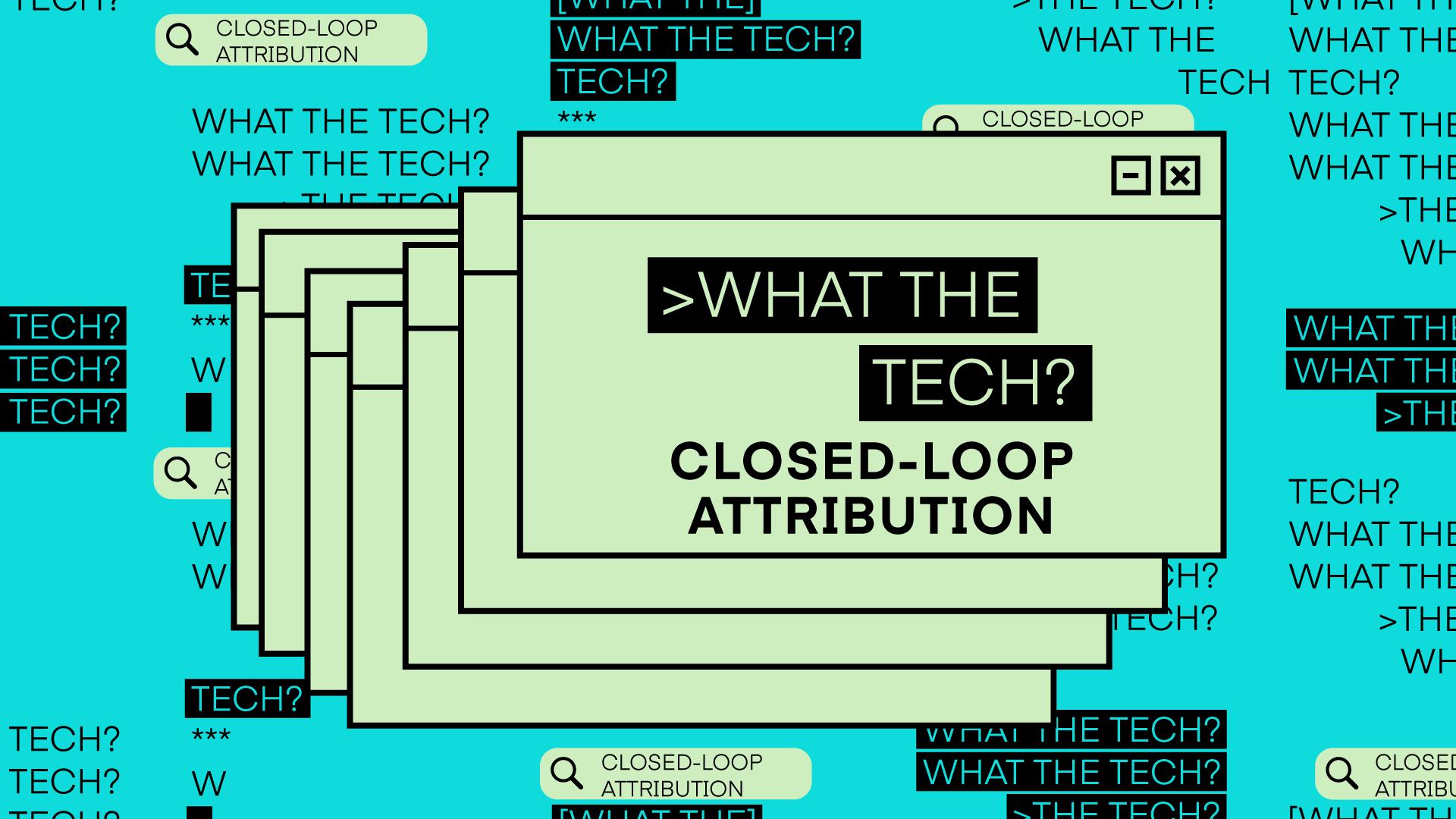What the Tech is closed-loop attribution?

Illustration by Ollie Catton
A break down of what we mean by closing the loop.
Ever since the advent of advertising, marketers have struggled to prove that advertising does, in fact, work.
It’s an exceedingly difficult task — how do you prove, empirically, that an ad persuaded someone to buy a particular product or service? — and advertisers employ all kinds of methods to tackle it. There are brand lift studies, focus groups, coupons, promo codes, in-store sales data, attribution models, ROAS and incrementality studies, all aimed at measuring the impact of marketing and advertising campaigns.
The ultimate goal of these attribution and market research efforts is to close the loop and develop a comprehensive picture of the consumer journey, from an initial ad exposure to eventual purchase.
That’s a lot of jargon, especially if you’re new to this whole online marketing, so let’s break down, piece by piece, what we mean by closing the loop.
What is closed-loop attribution?
Closed-loop attribution (also referred to as “closed-loop measurement”) is marketing measured by how well it affects sales.
But isn’t every marketing campaign intended to increase sales?
Kind of.
Yes, the ultimate goal of marketing is to move more product, but there are lots of shorter goals that happen along the way. This is where the loop concept comes in.
The process of convincing a consumer to buy a particular product or service — the “customer journey,” as it’s often called — is often thought of as a loop or funnel. At the beginning of the loop (or at the top of the funnel), you have a consumer who is unaware of a brand. The goal at this stage is to introduce the brand to the consumer via brand-building campaigns, ads designed to induce a general awareness of a brand, and not an immediate purchase. (It’s hard to convince a consumer to buy a new brand right away, but if you can, you’ll do very well in this business.)
The next phase, slightly further along the loop/down the funnel, is the consideration phase, where brands try to get the consumer to think about the brand more frequently and seriously. The goal here is to increase brand affinity and get the consumer to consider buying the brand.
And at the end of the loop (or bottom of the funnel) is the purchase point, where the brand pushes the consumer over the edge and gets them to finally buy the brand.
Closed-loop attribution tracks every step of this process, from start to finish, giving brands a more holistic assessment of their marketing strategies and spending — hence “closing the loop”?
What differentiates closed-loop from other forms of attribution?
As outlined above, there are many stops along the consumer journey, and most campaigns and measurement tactics are designed to address short segments of that journey.
Let’s use a hypothetical: Imagine there’s a new direct-to-consumer streetwear brand that’s trying to make inroads with Millennial and Zoomer consumers. The brand’s video ad campaign is intended to make consumers aware of the new clothing line. The success of that campaign is measured by how well and how favorably consumers remember the ad after seeing the ad. It’s a focused campaign, with a narrow goal.
The brand’s subsequent campaign — which is further along the loop/funnel — retargets those users on the web with shoppable ads. The goal of this campaign is to get users to click through the ad and make a purchase.
Each of these campaigns is myopically focused on its own goals, but closed-loop attribution would look at how these two campaigns work together. Did the video ads influence the consumer’s shopping decision? Or did he make an impulse buy while scrolling through an article? Or did he see the ad on the web, forget about the brand, then see the video ad, then go into the store, and then buy the product
Closed-loop attribution looks into how all of the components of a brand’s marketing complement each other, and their ultimate effect on sales.
Digital media has made it easier to conduct closed-loop attribution. Brands can track consumers are multiple marketing touchpoints, and technology has allowed us to marry those disparate data points together and develop more comprehensive insights into consumers’ behaviors.